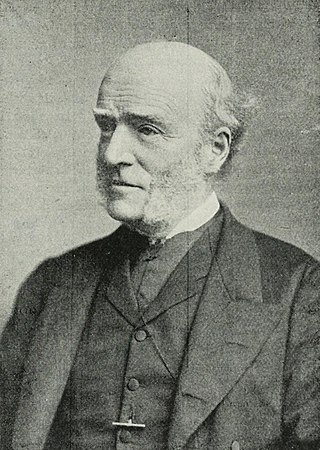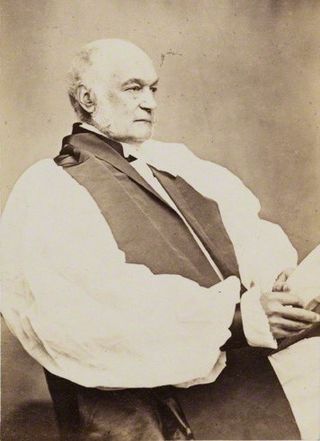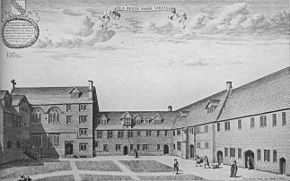
Oriel College is a constituent college of the University of Oxford in Oxford, England. Located in Oriel Square, the college has the distinction of being the oldest royal foundation in Oxford. In recognition of this royal connection, the college has also been historically known as King's College and King's Hall. The reigning monarch of the United Kingdom is the official visitor of the college.

Thomas Hearne or Hearn was an English diarist and prolific antiquary, particularly remembered for his published editions of many medieval English chronicles and other important historical texts.

Thomas Hughes was an English lawyer, judge, politician and author. He is most famous for his novel Tom Brown's School Days (1857), a semi-autobiographical work set at Rugby School, which Hughes had attended. It had a lesser-known sequel, Tom Brown at Oxford (1861).

John Lowther, 1st Viscount Lonsdale, PC FRS, known as Sir John Lowther, 2nd Baronet, from 1675 to 1696, was an English politician.

George Moberly was an English cleric who was headmaster of Winchester College, and then served as Bishop of Salisbury from 1869 until his death.

The Monro of Fyrish family were a Scottish family and branch of the ancient highland Clan Munro. The family produced a notable dynasty of doctors to London in the 18th and 19th century where they were involved in early work on curing 'insanity'. Four generations occupied successively the position of (Principal) Physician of the notorious Bethlem Hospital (Bedlam). They were also leading members of a variety of important medical associations. Other members were painters, priests and philanthropists of note and one was an important early patron to J. M. W. Turner.

Sir John Dodson was an English judge, aka Dean of Arches, and member of parliament.
William Thomas was a Welsh Anglican bishop. He was ejected from his living at Laugharne during the English Civil War. He was restored in 1660 and became the Bishop of St David's and later the Bishop of Worcester.
Drummond Percy Chase was the Principal of St Mary's Hall, Oxford.
Charles Abdy Marcon was an English clergyman, Master of Marcon's Hall, a private hall of Oxford University, from 1891 to 1918, then from 1918 Vicar of Kennington in south London.
George Henry Sacheverell Johnson FRS was a British clergyman and academic who was Dean of Wells and a professor at the University of Oxford.
The Oriel Noetics is a term now applied to a group of early 19th-century dons of the University of Oxford closely associated with Oriel College. John Tulloch in 1885 wrote about them as the "early Oriel school" of theologians, the contrast being with the Tractarians, also strongly based in Oriel.
The parliamentary visitation of the University of Oxford was a political and religious purge taking place from 1647, for a number of years. Many Masters and Fellows of Colleges lost their positions.
Morgan Phillips was a Welsh Roman Catholic priest and a benefactor of Douai College.
Thomas Fry (1775–1860) was an English cleric and academic.
Matthew Smyth was the first Principal of Brasenose College, Oxford.
The Association for the Education of Women or Association for Promoting the Higher Education of Women in Oxford (AEW) was formed in 1878 to promote the education of women at the University of Oxford. It provided lectures and tutorials for students at the four women's halls in Oxford, as well as for female students living at home or in lodgings and was dissolved in 1920 when women were admitted as members of the university.











